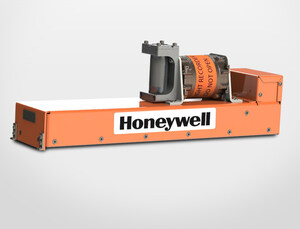PHOENIX, Dec. 18, 2012 /PRNewswire/ -- Honeywell Aerospace (NYSE: HON) announced that its Reaction Wheel Assemblies (RWAs) for satellites, which are designed to control the momentum of satellites in orbit, have totaled more than 100 million flight hours. In the more than 40 years that Honeywell has created innovative products for satellites, such as RWAs, no Honeywell RWA has ever caused a satellite to fail or abort a mission.
(Logo: http://photos.prnewswire.com/prnh/20080425/LAF040LOGO)
Currently Honeywell has more than 1,100 RWAs in orbiting satellites with many satellites staying operational beyond their originally intended mission length due to Honeywell products.
What Is an RWA?
An RWA steers a satellite while in orbit, pointing it in the right direction and putting it in the right position. It is critical to every function a satellite performs, whether for civil and military communications, data transmission, or other purpose.
According to the Satellite Industry Association, government and civil communications satellites make up nearly 60 percent of the satellites in orbit.[1] Without proper momentum control, satellites are at risk of not performing properly, aborting their mission or potentially failing completely. Without the precise momentum control of Honeywell RMAs, consumers can lose access to phone, TV, Internet, mobile communications and other services provided by satellites.
In addition to Reaction Wheel Assemblies, Honeywell provides Control Moment Gyroscopes (CMGs) for applications requiring higher torque or more agility than is typically available from RWAs.
Honeywell Satellite Expertise
Honeywell has provided products and services, including RWAs, to satellite operators for more than 40 years. Satellite operators such as Lockheed Martin, Northrop Grumman, Ball Aerospace, the U.S. Department of Defense and numerous others use Honeywell RWAs to keep their satellites in orbit and functioning well beyond the initial scope of the mission.
Honeywell customers understand that by using Honeywell RWAs, satellites can stay functioning in space and on mission longer than expected, saving the time and resources needed to launch a new satellite or replace a failed one. With satellite missions often costing in the hundreds of millions of dollars, keeping satellites running longer with RWAs helps operators keep costs down.
Supporting Quote
Kurt Meister, Vice President of Space, Honeywell Aerospace
"Honeywell has been building RWAs for more than 40 years and in that time no Honeywell Reaction Wheel Assembly has ever failed to meet its mission life requirements. In fact, we have units designed to perform for 10 years that are still working 30 years later. Our RWAs provide superior performance in terms of size and power efficiency, and we assist our customers by modeling out vehicle control laws and control validation, making sure that everything continues to work long after the launch."
Supporting Resources
- Read more about Honeywell Aerospace
- Follow @Honeywell_Aero on Twitter
- Subscribe to Honeywell's Corporate RSS feed
Based in Phoenix, Arizona, Honeywell's aerospace business is a leading global provider of integrated avionics, engines, systems and service solutions for aircraft manufacturers, airlines, business and general aviation, military, space and airport operations.
Honeywell (www.honeywell.com) is a Fortune 100 diversified technology and manufacturing leader, serving customers worldwide with aerospace products and services; control technologies for buildings, homes and industry; turbochargers; and performance materials. Based in Morris Township, N.J., Honeywell's shares are traded on the New York, London, and Chicago Stock Exchanges. For more news and information on Honeywell, please visit www.honeywellnow.com.
Honeywell and the Honeywell logo are the exclusive properties of Honeywell, are registered with the U.S. Patent and Trademark Office, and may be registered or pending registration in other countries. All other Honeywell product names, technology names, trademarks, service marks, and logos may be registered or pending registration in the U.S. or in other countries. All other trademarks or registered trademarks are the property of their respective owners. Copyright 2012 Honeywell.
This release contains certain statements that may be deemed "forward-looking statements" within the meaning of Section 21E of the Securities Exchange Act of 1934. All statements, other than statements of historical fact, that address activities, events or developments that we or our management intends, expects, projects, believes or anticipates will or may occur in the future are forward-looking statements. Such statements are based upon certain assumptions and assessments made by our management in light of their experience and their perception of historical trends, current economic and industry conditions, expected future developments and other factors they believe to be appropriate. The forward-looking statements included in this release are also subject to a number of material risks and uncertainties, including but not limited to economic, competitive, governmental, and technological factors affecting our operations, markets, products, services and prices. Such forward-looking statements are not guarantees of future performance, and actual results, developments and business decisions may differ from those envisaged by such forward-looking statements.
[1] Satellite Industry Association, http://www.sia.org/wp-content/uploads/2012/10/EXTERNAL-2012-SIA-SSIR-Presentation-Final-Version.pdf
SOURCE Honeywell Aerospace
WANT YOUR COMPANY'S NEWS FEATURED ON PRNEWSWIRE.COM?
Newsrooms &
Influencers
Digital Media
Outlets
Journalists
Opted In




Share this article